Unless you enjoy people stepping on your toes, tourists poking you in the back and barely visible displays, avoid the National Museum of History’s (NMH) The Golden Age of the Qing: Treasures From the Shenyang Palace Museum (大清盛世—瀋陽故宮文物展) on weekends. Saturday afternoon found this reviewer squeezed into the exhibit’s dimly lit space with hundreds of other museumgoers keen to catch a glimpse of the garments, weapons, jewelry and furniture on loan from Shenyang Palace (瀋陽故宮), located in northeastern China and designated a UNESCO World Heritage Site in 2004.
The crowd at the entrance was three-people deep — a child had to be hoisted up to see the introductory contents. A guided tour of about 30 people managed to obscure entire displays — an easy feat, considering the maze of glass display cases visitors are forced to circumvent.
Despite this, The Golden Age of the Qing is not to be missed. The show follows on the heels of recent collaborations between the NMH and museums in China, and provides another “great breakthrough in cross-strait cultural exchange,” according to Chang Yu-tan (張譽騰), the museum’s director.
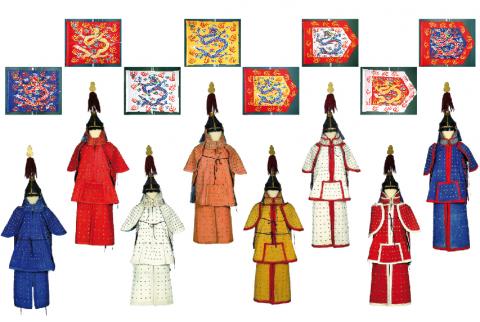
Photos courtesy of the National Museum of History
A year in the making, the top-down exhibit presents artifacts from the early seat of Manchurian power established after busybody chieftain Nurhaci united the region’s disparate nomadic tribes in the early 17th century.
Begun in 1625, Shenyang Palace was expanded in 1636, a decade after Huang Taijin (皇太極), Nurhaci’s son, ascended the throne. It was also during this time that Huang conquered northern China, crowned himself Qing emperor and changed the name Shenyang (瀋陽) to Shengjing (盛京), or “Flourishing Capital.” In 1644, after defeating Ming loyalists at the Battle of Shanhai Pass (山海關之戰), Emperor Shunzhi (順治皇帝) moved the Manchu seat of power to Beijing, but Shenyang retained some symbolic power.
Though the exhibit is presented in five sections — The Rise of the Manchus; Emperors and Empire; Warriors of the Eight Banners; Beauties of the Court; and Luxuries of the Court and the Imperial Life — it essentially tells one story in two parts.
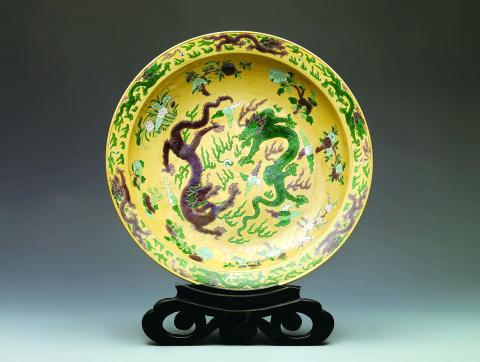
Photo courtesy of the National Museum of History
The first, common with exhibits of this kind, examines the imperial line beginning with Nurhaci. The second, less common, offers a glimpse of the fashions and mores of the imperial concubines. The two themes are linked by the Eight Banners (八旗), a hierarchical (class or caste) system of administration established by Nurhaci in 1605 (though it wasn’t fully implemented until 1642). The banners were employed in all facets of life, from hunting to entertainment and religious rituals.
The exhibit explains in detail the structure and purpose of each banner — the ethnicity of its members, their rank and pay, and how each was positioned on the field of battle. The color-coded armor worn by each banner’s soldiers is here displayed along with their corresponding flags. The bows and arrows used by the cavalry and swords and daggers used by the infantry are shown alongside colorful paintings depicting military formations. Historians agree that the Eight Banner system made the Manchu army a potent military force.
The organization of the banner system also extended to the imperial court, as is revealed by the somewhat euphemistically titled Beauties of the Court section. The clothing and jewelry of the emperor’s concubines were ordered along the same lines as the military.
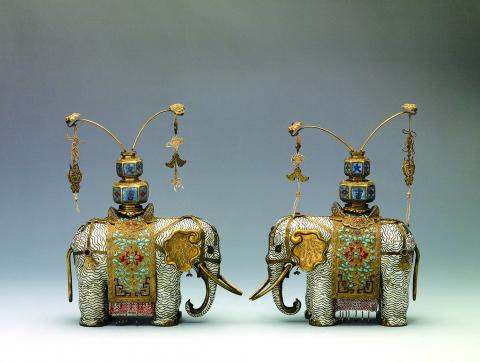
Photo courtesy of the National Museum of History
“No expression of personality was allowed. Forms of costume, be it court robe or ceremonial robe, [followed] set regulations with colors and decorative patters as symbols of rank,” states one of the many excellent essays in the exhibition catalogue.
The museum, to its credit, gives over considerable space to these lovely garments: a court vest of midnight black bearing a golden dragon, or a gorgeous yellow silk robe with vivid butterfly designs in various hues of blue. As with much of the armor, these costumes are displayed in rectangular glass cases, providing visitors with the opportunity to view the intricate stitch work and insignia of rank from all angles.
The displays include the accessories worn by these women — the kind of flourishes that ensured they were presentable to the emperor. Enameled hand mirrors, cosmetics boxes inlaid with lapis lazuli, silk fans and shoes and jewelry made from emerald hint that these “ladies” were bestowed with one purpose: to serve the emperor and produce his descendents.
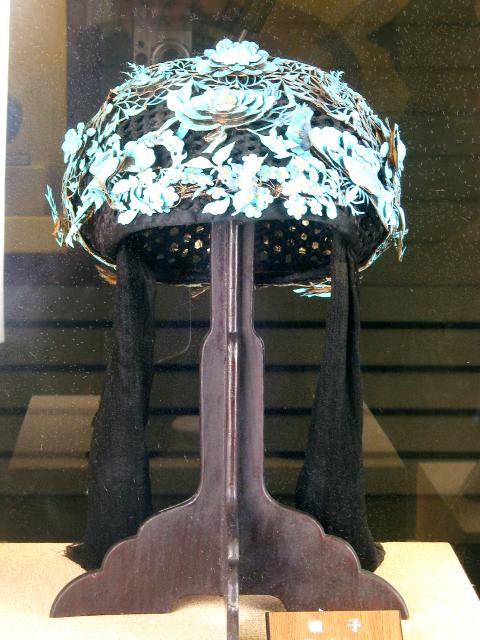
Photo courtesy of the National Museum of History
There is much else on view here. One room presents in detail the Battle for Shanhai Pass while another room houses a small-scale replica of Shenyang Palace. Some will be delighted by the section on Manchu cuisine: “When dining at home, Manchus preferred hot pot.” There is even a display on “eco-friendly” iceboxes, which were used to keep meat and vegetables fresh during the summer months. But it is the numerous gowns, coats of armor, jewelry and weapons that make this show stand out.
And beyond admiring the beautiful artifacts, there is a lesson to be learned. Ironically, the highly ordered and inflexible Eight Banner system, which facilitated the Manchus’ rise to power in the 17th century, also contributed to the Qing Dynasty’s downfall more than 250 years later.
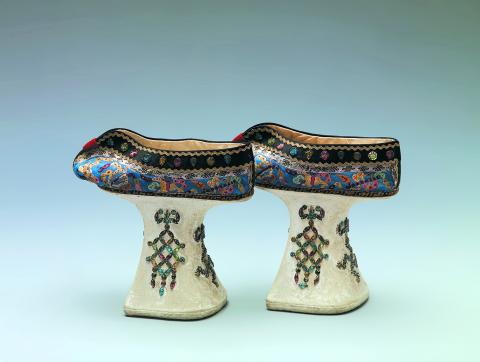
Photo courtesy of the National Museum of History
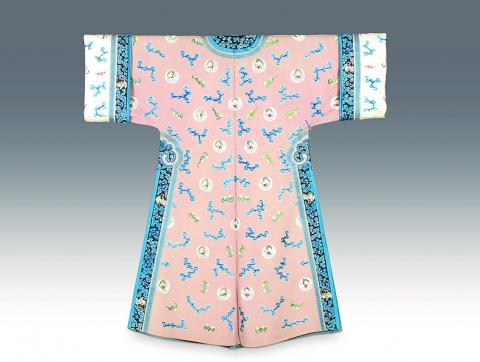
Photo courtesy of the National Museum of History

Most heroes are remembered for the battles they fought. Taiwan’s Black Bat Squadron is remembered for flying into Chinese airspace 838 times between 1953 and 1967, and for the 148 men whose sacrifice bought the intelligence that kept Taiwan secure. Two-thirds of the squadron died carrying out missions most people wouldn’t learn about for another 40 years. The squadron lost 15 aircraft and 148 crew members over those 14 years, making it the deadliest unit in Taiwan’s military history by casualty rate. They flew at night, often at low altitudes, straight into some of the most heavily defended airspace in Asia.

Beijing’s ironic, abusive tantrums aimed at Japan since Japanese Prime Minister Sanae Takaichi publicly stated that a Taiwan contingency would be an existential crisis for Japan, have revealed for all the world to see that the People’s Republic of China (PRC) lusts after Okinawa. We all owe Takaichi a debt of thanks for getting the PRC to make that public. The PRC and its netizens, taking their cue from the Chinese Communist Party (CCP), are presenting Okinawa by mirroring the claims about Taiwan. Official PRC propaganda organs began to wax lyrical about Okinawa’s “unsettled status” beginning last month. A Global

Taiwan’s democracy is at risk. Be very alarmed. This is not a drill. The current constitutional crisis progressed slowly, then suddenly. Political tensions, partisan hostility and emotions are all running high right when cool heads and calm negotiation are most needed. Oxford defines brinkmanship as: “The art or practice of pursuing a dangerous policy to the limits of safety before stopping, especially in politics.” It says the term comes from a quote from a 1956 Cold War interview with then-American Secretary of State John Foster Dulles, when he said: ‘The ability to get to the verge without getting into the war is

Like much in the world today, theater has experienced major disruptions over the six years since COVID-19. The pandemic, the war in Ukraine and social media have created a new normal of geopolitical and information uncertainty, and the performing arts are not immune to these effects. “Ten years ago people wanted to come to the theater to engage with important issues, but now the Internet allows them to engage with those issues powerfully and immediately,” said Faith Tan, programming director of the Esplanade in Singapore, speaking last week in Japan. “One reaction to unpredictability has been a renewed emphasis on